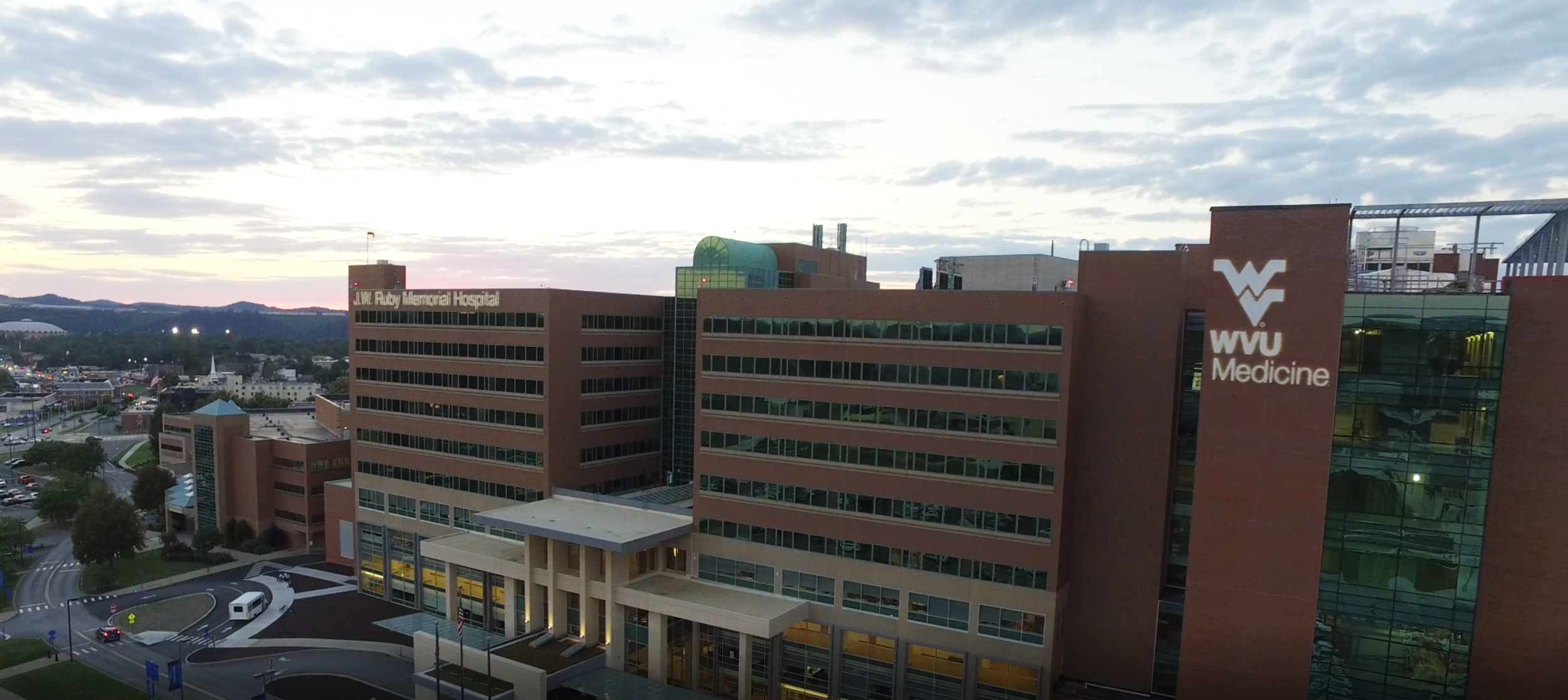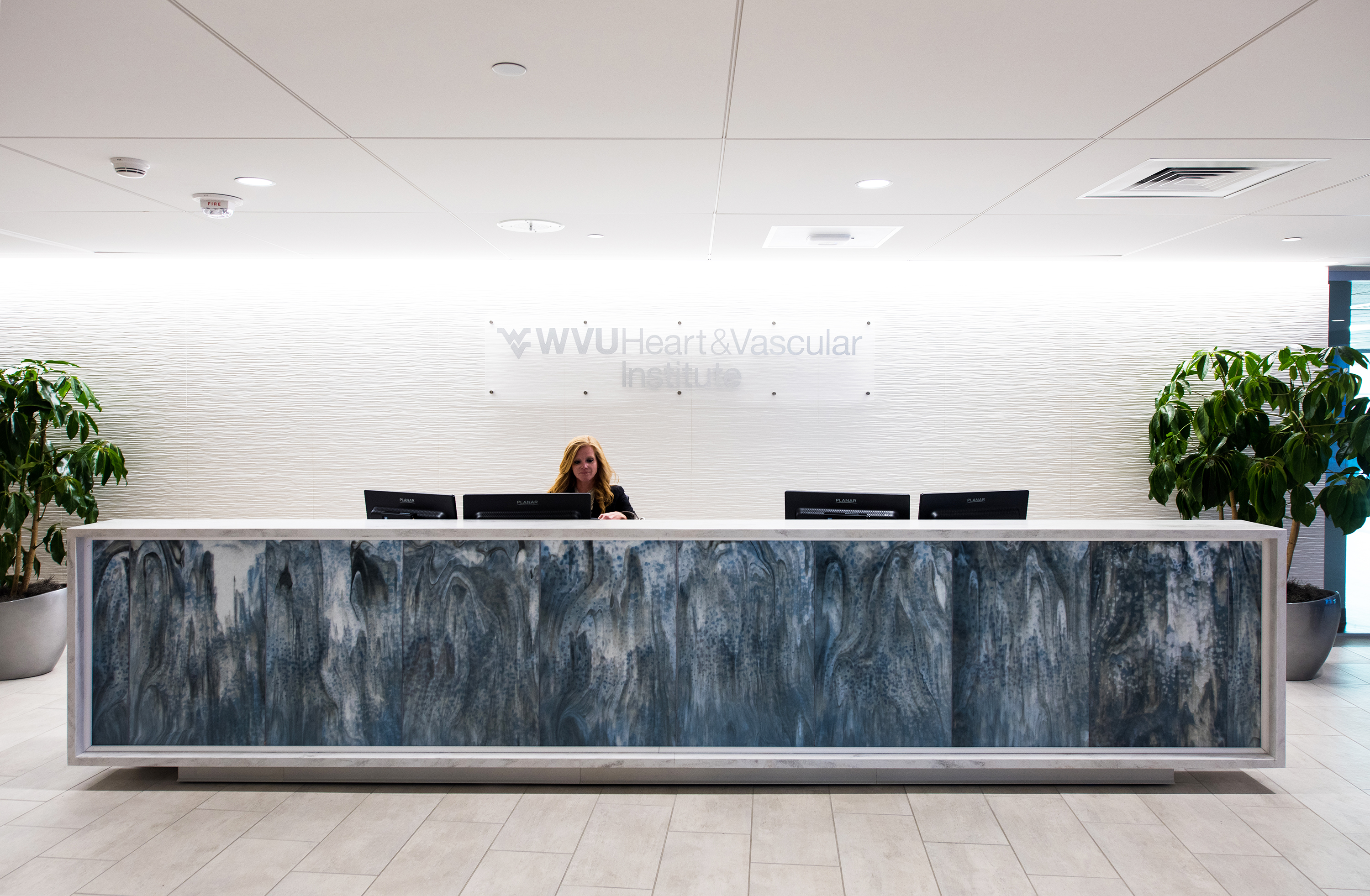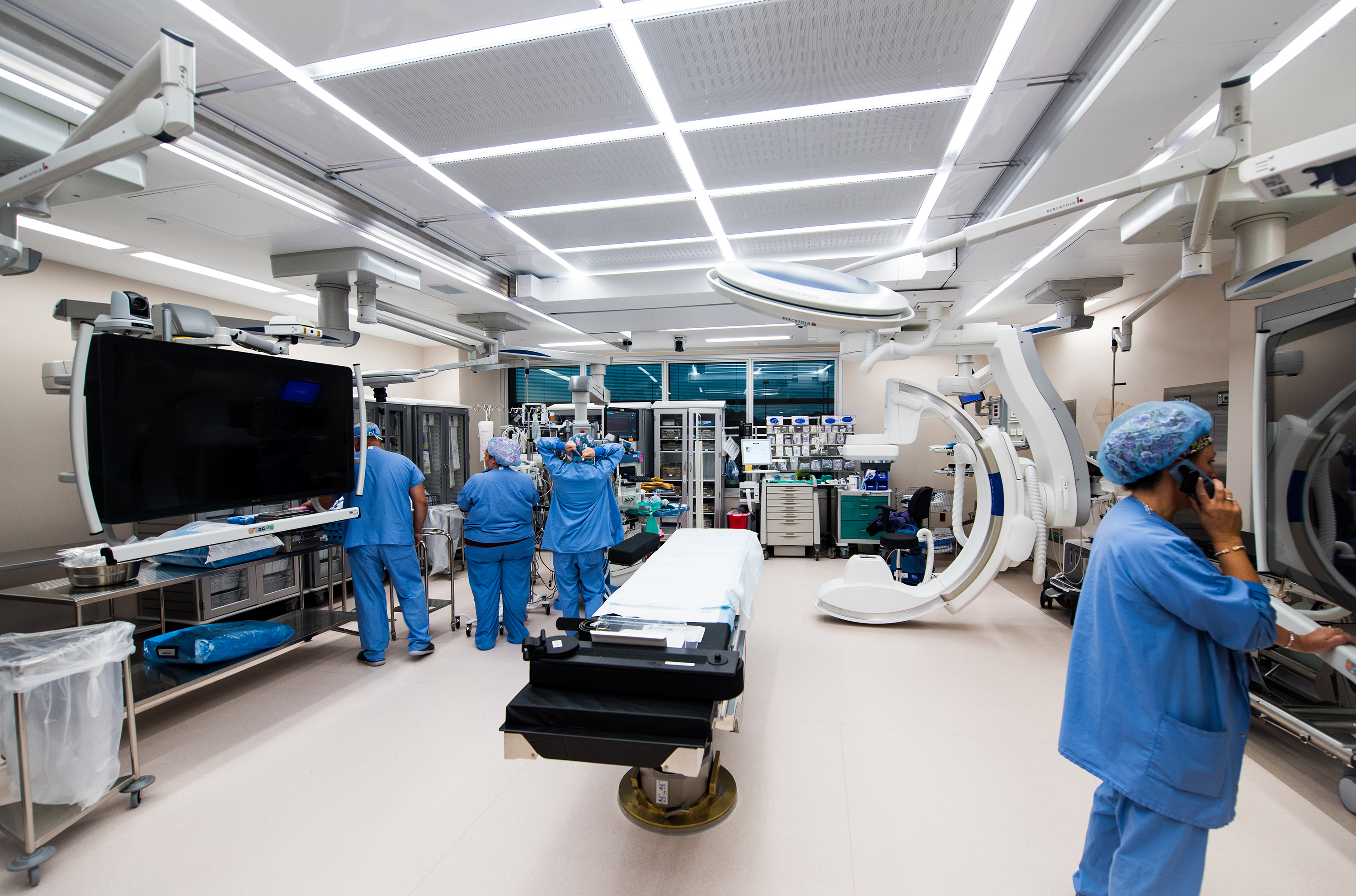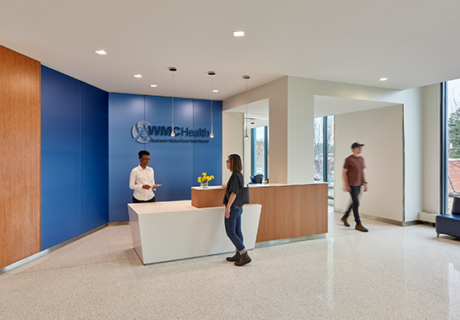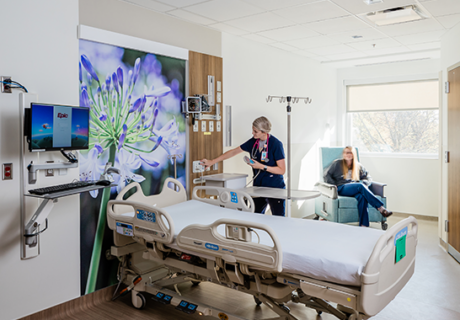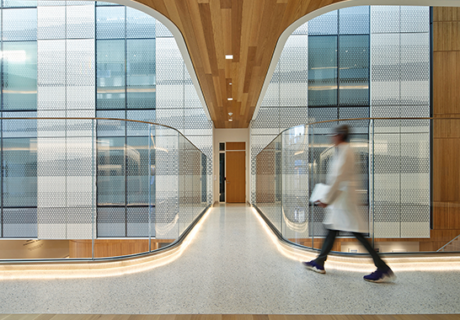All In One At WVU Heart and Vascular Institute
Many of the key building elements, including the inner core, shell, column spacing, floor-to-ceiling height, load-bearing capacity, and utility distribution, were already in place when architecture firm HED (Southfield, Mich.) joined the $80 million WVU Heart and Vascular Institute project, which was under construction at West Virginia University Health System’s J.W. Ruby Memorial Hospital in Morgantown, W.Va.
The firm had just 15 months to transform the 125,00-square-foot layout—which was slated to be a children’s hospital when construction started—into a state-of-the-art academic, research, and surgical heart and vascular center. The 10-story facility, which includes clinic and education space, interventional radiology, and an ICU, had to connect with the existing buildings on campus while creating a new patient-centric experience.
“The goal was to have everything in one building, so the patient not only gets great care, but has an experience of almost a family of care providers,” says former OR nurse Holly Garon, assistant vice president, surgical services, at WVU Medicine.
One of the biggest challenges on the project involved the second floor, which had to be reconfigured from a patient unit to an interventional procedure floor to house surgery, catheterization, electrophysiology, and advanced procedures.
“From an architect’s standpoint, the insertion of an interventional floor into what was supposed to be a patient care unit was the biggest design challenge,” says David Jaeger, principal and healthcare design studio director at HED.
Looking at the L-shaped floorplate, the design team, decided the best solution was to locate the hybrid rooms in the largest part of the wings where the column spacing worked with the space needs of the rooms.
“The real important part was getting the procedure and surgical environment in the proper part of what we had to deal with,” he says. Then, the other parts of the “L” could be used for the more flexible areas such as prep and recovery.
While building the new center, WVU also set out to grow its service line as well as the types of procedure it could handle. For example, while its old facility housed one cardiac OR and one hybrid room in the main OR and three cath labs in the old unit, the new center, which opened in 2017, houses three open cardiac ORs, three cath labs, three hybrid rooms, and one electrophysiology suite providing space for the facility to increase its volume of less invasive procedures.
“We have more room and we’ve recruited more providers that perform those procedures,” Garon says.

